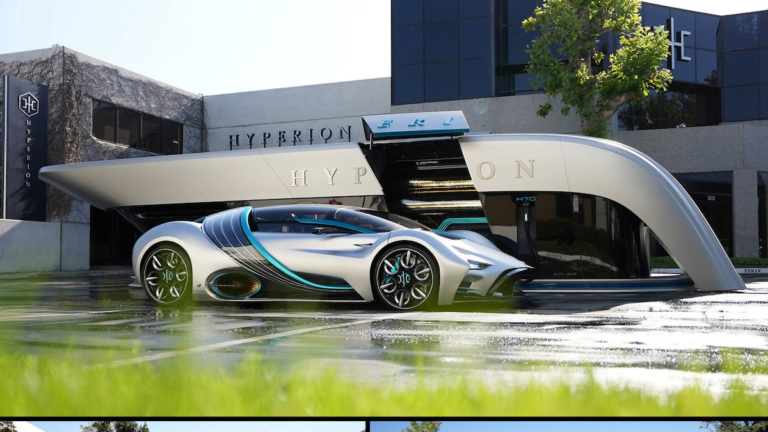Hyperion Motors, a hydrogen technology company, has announced the launch of its Hyper: Fuel Mobile Stations, capable of refueling both hydrogen fuel cell electric vehicles (FCEVs) and battery electric vehicles (BEVs). The mobile refueling station can be used across the country, and can be easily deployed and redeployed when driving patterns change. Previously, Hyperion unveiled the 1,000-mile range XP-1 in 2020 to demonstrate the benefits of hydrogen-ion storage over lithium-ion. Using hydrogen-ion storage technology, Hyper:Fuel Mobile Stations address a key challenge facing many commercial hydrogen trucks and battery cars on the road today: refueling and refueling infrastructure. – recharge.
Investment in infrastructure construction has been plagued and delayed by many issues, including site selection, construction costs, and more. Many experts believe that this lack of refueling, and recharging infrastructure is the biggest barrier to FCEV and BEV adoption. Hyper: Fuel Mobile Stations™ can travel to and from existing gas stations, big box stores, and other high-traffic areas to meet real-time demand.
The Hyperion powered station has a hydrogen dispenser for FCEVs and an optional DC fast-charger for BEVs. It can service two separate parts of the vehicle simultaneously at lower cost and risk compared to permanently installed charging stations or hydrogen dispensers. FCEV customers can refuel in 5 minutes and most BEV customers can recharge 80% of their battery in less than 20 minutes.
Hyper: Fuel Mobile Stations can be used to produce hydrogen on-site through water electrolysis. This decentralized approach means it can generate green hydrogen from the sun when combined with solar. On-site fuel generation is clean, green, and increases station uptime—another major hurdle for today’s hydrogen stations. The powered station can be quickly deployed without long construction delays, opening up new markets across the USA for automakers to increase FCEV and BEV sales.
Internal systems will include NASA and Shell GameChanger technologies to maximize power and increase refueling efficiency. The roof is tiled with solar-tracking photovoltaic panels to maximize direct sunlight. Customers can experience state-of-the-art touch screen controls, contactless payment, and a self-sanitizing nozzle that uses UV light.
In addition to vehicles, Hyper:Fuel Mobile Stations are designed to provide electricity as stationary power sources. By storing electrons for longer periods of time than batteries can, the powered station can provide backup power at times to improve grid stability during weather emergencies or grid failures. .
When asked why Hyperion took on this challenge, CEO Angelo Kafantaris replied, “Today’s energy infrastructure is being pushed to its absolute limits. The industry needs a versatile, scalable solution to power our growing needs.” Hyper: Fuel Mobile Stations™ will be manufactured at the company’s 65-acre manufacturing HQ in Columbus, OH. Hyperion will roll out these stations across the United States to form a dynamic Hyper:Fuel Network with its partners starting in 2023.
